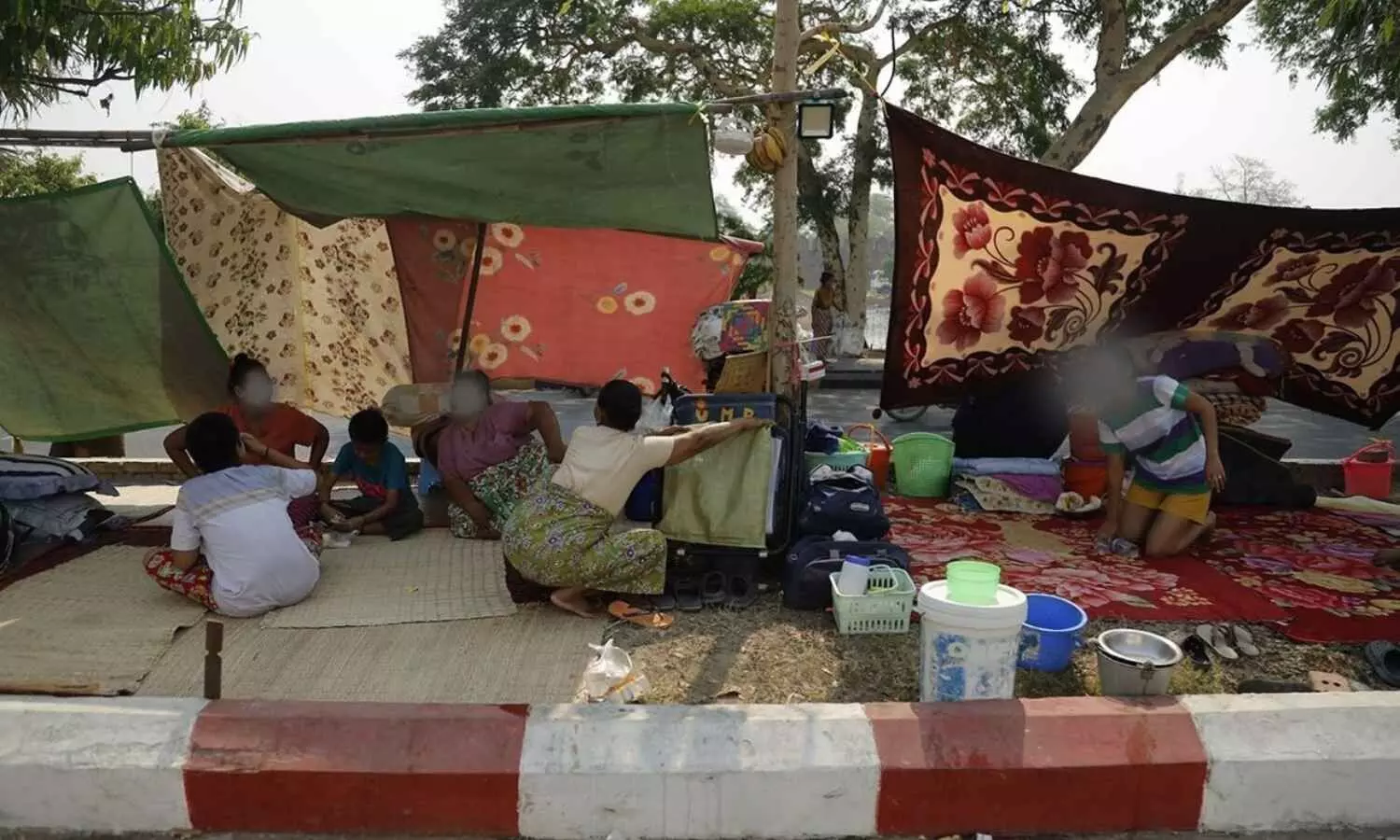Myanmar Earthquake Sparks Health Crisis: WHO Warns of TB, HIV, and Disease Outbreaks

Yangon: In the wake of the devastating 7.7 and 6.4 magnitude earthquakes that struck central Myanmar on March 28, the World Health Organization (WHO) has raised concerns about the escalating health risks faced by tens of thousands of displaced people.
The organization has identified tuberculosis (TB), HIV, and vector- and water-borne diseases as major threats in the affected regions.
Even before the earthquakes, more than 3.5 million people in Myanmar were already displaced. The disaster has worsened living conditions, with overcrowded shelters, poor sanitation, damaged infrastructure, and disrupted healthcare services, increasing the risk of disease outbreaks.
Myanmar is among the countries with the highest TB burden in the WHO South-East Asia Region. In 2020, approximately 167,000 people developed TB and about 22,000 died from the disease, including nearly 2,900 people living with HIV.
A recent national TB epidemiological review conducted in early April noted that although some surveillance systems remain functional, access to healthcare is becoming more uneven.
TB services are continuing in makeshift settings such as staff accommodations and community halls, but WHO emphasized these setups are far from sufficient.
There is an urgent need to expand molecular testing, improve TB-HIV coordination, and strengthen community-based disease detection efforts.
“Lives are at stake,” said Dr Thushara Fernando, WHO Representative to Myanmar. “People living with TB or HIV, and communities at risk of dengue and malaria, cannot wait for health systems to be rebuilt. That is why WHO is supporting partners on the ground to maintain continuity of care and prevent the spread of infectious diseases – even under extremely difficult conditions.”
The HIV response, which is integrated with TB services, has also been severely impacted. Although an estimated 280,000 people are living with HIV in Myanmar, only 70% were on antiretroviral therapy in 2023.
The current crisis has further disrupted services, particularly for vulnerable populations such as sex workers, people who inject drugs, and men who have sex with men.
As Myanmar enters monsoon season, the risk of mosquito-borne diseases like dengue is also on the rise. In 2023, the country reported more than 16,000 dengue cases and 77 related deaths, many involving children. With damaged infrastructure and poor drainage in temporary shelters, earthquake-affected communities face even higher risks.
WHO has initiated a targeted dengue prevention campaign in partnership with national and local actors. Measures include the distribution of over 4,500 rapid diagnostic kits, 6.2 tonnes of larvicide, and 500 insecticide-treated tent nets for infants and children.
Water-borne diseases, including cholera, are another growing concern. Clusters of acute watery diarrhoea have already been reported.
WHO has deployed early warning systems and provided essential supplies such as rehydration salts and intravenous fluids, while continuing efforts to improve sanitation and water quality in high-risk areas.
The coming weeks are seen as critical for Myanmar. WHO is calling for coordinated action to restore health services, maintain treatment continuity, and prevent a secondary health crisis. It has appealed for US$8 million to support ongoing emergency response efforts.
To expand support, the WHO Foundation has launched a Myanmar Earthquake Appeal, seeking contributions from individuals, businesses, and philanthropic institutions.
So far, WHO has mobilized nearly 140 tonnes of medicines and medical equipment, enough to support the health needs of around 450,000 people for three months. It is also coordinating 16 Emergency Medical Teams currently providing emergency and primary care.
“We must respond at the scale of the challenge,” Dr Fernando added. “This is no longer just a natural disaster – it is a complex and evolving health emergency. The people of Myanmar deserve no less.”


